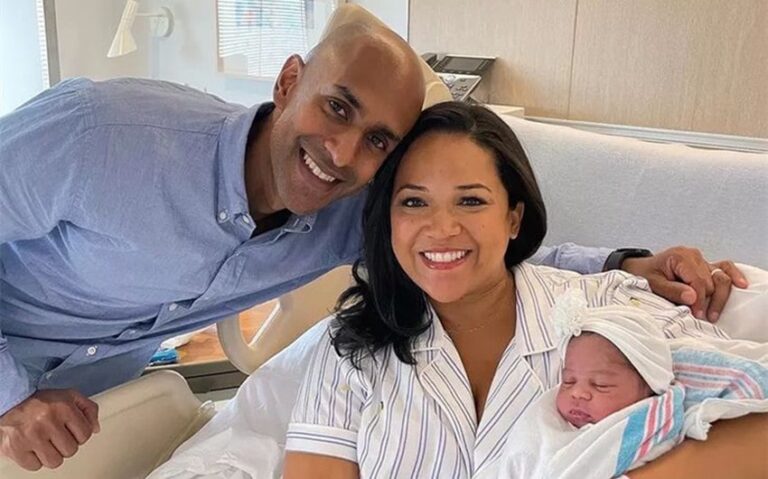What Anna Nalick’s Net Worth Tells You About Music, Memory, and Momentum
When you think about Anna Nalick’s net worth, it’s easy to assume her career was defined by a single song—one unforgettable track that flooded radios and playlists in the mid-2000s. And in some ways, you’d be right. “Breathe (2 AM)” was everywhere, and its haunting lyrics still echo for many listeners. But if you’re curious about what Anna Nalick’s net worth really looks like today, you’re also asking a deeper question: what does lasting value mean for an artist whose most visible success came early—but whose creative path has never stopped evolving?
From Debut to Defining Moment—Anna Nalick’s Musical Breakthrough
Anna Nalick wasn’t born into stardom. Raised in California, she grew up with a natural inclination toward music and storytelling. Influenced by both classic rock and confessional singer-songwriters, she developed a distinctive voice—emotionally honest, melodic, and a little bit vulnerable. Before long, her talents caught the attention of music producers, leading to a recording contract and the creation of her debut album, Wreck of the Day.
Released in 2005, the album made a respectable showing, but it was the lead single “Breathe (2 AM)” that truly broke through. You probably remember where you were the first time you heard it. Maybe it played in the background of a TV drama, maybe it showed up on a mixed CD from a friend, or maybe it found you during one of those introspective, late-night moments it seemed to be written for.
“Breathe” was more than just a hit; it was a mood, a moment, a mirror for anyone caught between regret and resolution. It peaked at number 45 on the Billboard Hot 100, but its impact far exceeded the charts. It became a fixture in television shows like Grey’s Anatomy, used not as filler, but as emotional punctuation—proof that the song resonated beyond the airwaves.
With one song, Anna Nalick had captured something deeply human. But success in music isn’t always linear, and the question of how that success translated financially is more layered than it seems.
Anna Nalick’s Net Worth—Breaking Down the Numbers
Anna Nalick’s net worth is estimated to be between $1 million and $2 million. That number may seem modest compared to mainstream pop stars or multi-platinum selling artists, but it reflects a career built on a combination of early commercial success, continued touring, and independent music production. Unlike celebrities who generate wealth through fashion lines or major endorsement deals, Nalick has kept her focus on music—and that has shaped both her earnings and her identity.
Estimated Net Worth and Royalties
“Breathe (2 AM)” has been Nalick’s biggest financial asset. In addition to album sales from Wreck of the Day, the song generated ongoing revenue through radio play, streaming platforms, and television licensing. Every time it plays on a show or gets added to a playlist, it likely generates a small royalty. Multiply that by years of consistent airplay and you begin to see how one song can provide long-term income, especially when it becomes emotionally iconic.
That said, the bulk of the royalties from major-label releases often go to record companies, producers, and rights holders—especially when an artist is just starting out. While Nalick certainly earned from “Breathe,” the actual percentage she took home would have been shaped by her contract with Columbia Records, which she signed at a young age.
Beyond the breakout single, Nalick also released additional music under the same label, including songs like “In the Rough” and “Shine,” both of which had moderate success. These tracks likely added to her royalty base, though not to the same extent as her debut hit.
Streaming services have also changed the math. While platforms like Spotify and Apple Music provide ongoing access to her music, the per-stream payout is notoriously low. Still, the digital accessibility of her catalog ensures that “Breathe” and her other tracks continue to generate residual income years after their release.
Touring and Independent Releases
After parting ways with Columbia Records, Nalick took a turn toward independence. In 2011, she released Broken Doll & Odds & Ends, an album produced without major label backing. This shift allowed her more creative control—but also meant she had to take on the financial risks and responsibilities of production, promotion, and distribution.
Interestingly, that move may have been financially wise in the long run. While independent artists don’t receive the same marketing push or upfront advances, they retain a much higher percentage of sales and royalties. Every digital download, CD purchase, or streaming payout from her independent work likely goes directly to her or a small team she controls.
Touring has also been a steady income source. Over the years, Nalick has continued to perform at small and mid-sized venues across the U.S. These shows, while not stadium-scale events, offer more intimate fan experiences—and provide income through ticket sales, merchandise, and VIP meet-and-greet opportunities. Unlike massive tours that require complex logistics and large crews, her tours are often leaner, more flexible, and more directly profitable.
Fans who come to see her today aren’t just there for nostalgia. They’re there because they’ve stayed with her—through changes in sound, in tempo, in perspective. That kind of loyalty builds a sustainable career, even if it doesn’t always come with celebrity headlines.
Other Ventures and Creative Output
In addition to performing and recording, Nalick may also generate income through songwriting—either for herself or for other artists. While she’s primarily known for her own work, many musicians quietly build revenue by contributing lyrics, melodies, or vocal performances to other projects.
There’s also the possibility of teaching, coaching, or leading creative workshops. Artists with Nalick’s experience and introspective approach are often sought out by aspiring songwriters and musicians looking to hone their craft. Whether she does this publicly or privately, it’s one more way her creative skills could translate into financial value.
Finally, her continued engagement with fans online and through platforms like Bandcamp or Patreon (if she uses them) offers a more direct and personal revenue model. These platforms allow artists to bypass traditional industry structures, building communities that support their work through monthly memberships, exclusive content, or early access to new material.
It’s not flashy, but it’s real. And in today’s music economy, that often matters more.







